“It is not the strongest of the species that survives, nor the most intelligent. It is the one that is the most adaptable to change.” – Charles Darwin
In today’s world, the above quote stands true for businesses as well. Digitization is changing the landscape of every industry, and industries that are ready to adapt, and adapt fast will be the ones who will thrive and flourish. Just like many other industries, the healthcare landscape is also experiencing tremendous transformations owing to technology advancements.
The healthcare industry continuously works towards making patient care more efficient and cost-effective. Digitization stands to benefit the industry not just in optimization at operational levels, but across the entire value chain. From hospital management, patient care, managing reports to virtually assisting patients, the positive implications of using technology are innumerable.
As patients become more technology-savvy, digital technologies can reinvent the entire patient lifecycle, enabling a more personalized, timely and cost-effective treatment journey.
Contents
Evolution of Technology in Healthcare
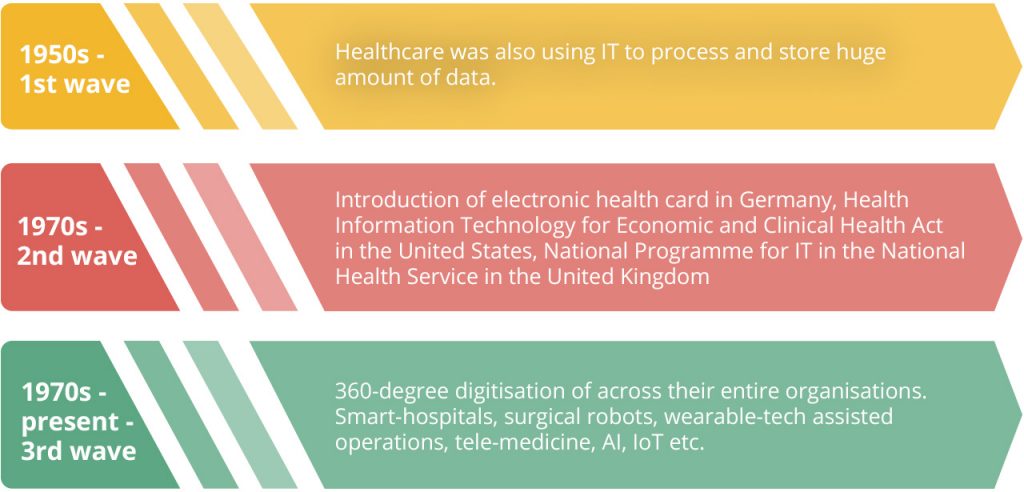
Digital Transformation in Healthcare
Smart-hospitals, surgical robots, wearable-tech assisted operations, telemedicine, are just some examples of how technology is revolutionizing the healthcare landscape.
Here is a look at how the healthcare industry is using technologies like AI, mobile apps, IoT, wearables, etc. to improve patient care and reduce costs across the healthcare value chain.
Technology-Enabled care:
TEC or technology-enabled care refers to the fields of telecare, telehealth, telemedicine, mHealth, digital health, eHealth, etc. TEC brings health technology, digital media, and mobile together. It has a profound impact on providing an integrated solution for patient monitoring and care in the health, wellness, and social care sectors.
Below are some examples of how TEC can make healthcare more efficient and cost-effective.
Reducing the patient-care and monitoring costs for patients with long-term ailments:
According to a report by ageuk.org.uk (which referenced a 2017 Horsfield report), approximately 4 million adults (40% of all people above the age of 65) in the UK have some form of a long-term illness. When considering a global scale, this number increases drastically. Patients with long-term conditions make regular hospital visits, require a lot of medication and continuous care. Digitization solutions like patient tracking and path monitoring can help improve the quality of hospital visits (which for a patient with a long-term illness is often), online consultancy and remote condition monitoring can help doctors diagnose issues faster and proactively, and online pharmacies can help get medicines to patients faster and more conveniently.’
Digital and mHealth can improve enterprise processes and improve outcomes:
Mobile Health, or mHealth, is providing medicinal and healthcare services over a mobile device. The healthcare industry is actually one of the top 3 domains to promote and accelerate the growth of mobile devices. According to a report by Statista, the global mHealth market size in 2016 was 21.2 billion US dollars. The projection for the year 2025 is 332.7 billion US dollars, which is an increase of over 15 times!
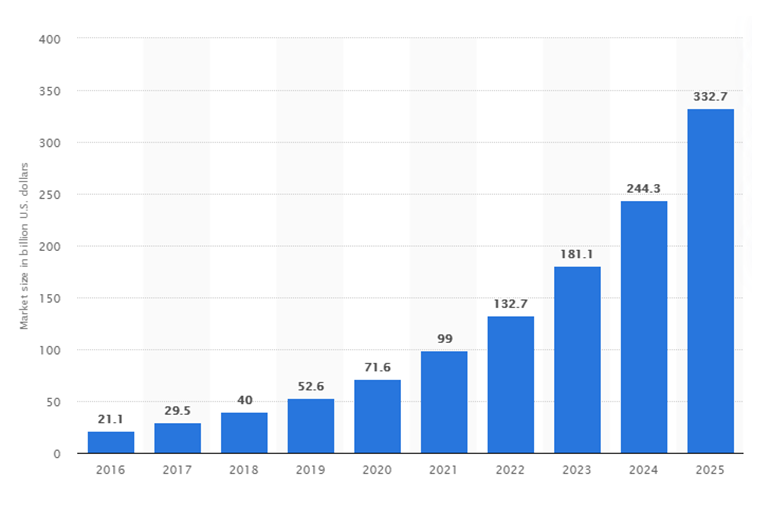
Image source
The rise in apps provided by the healthcare firms and the high engagement rate of apps have contributed to the prolific growth of this market. Mobile devices have become an integral part of our lives. Both Patients and Doctors can leverage the benefits of going mobile. While it helps patients self-manage and monitors their health, doctors can explore real-time information. Remote monitoring of patients’ health status is another benefit that home telehealth can provide. According to a study by mobius.md, in 2019 there are around 318,000 mHealth apps in app stores. This number almost doubled since 2015. The report further states that over 60% of people have downloaded at least one mHealth app.
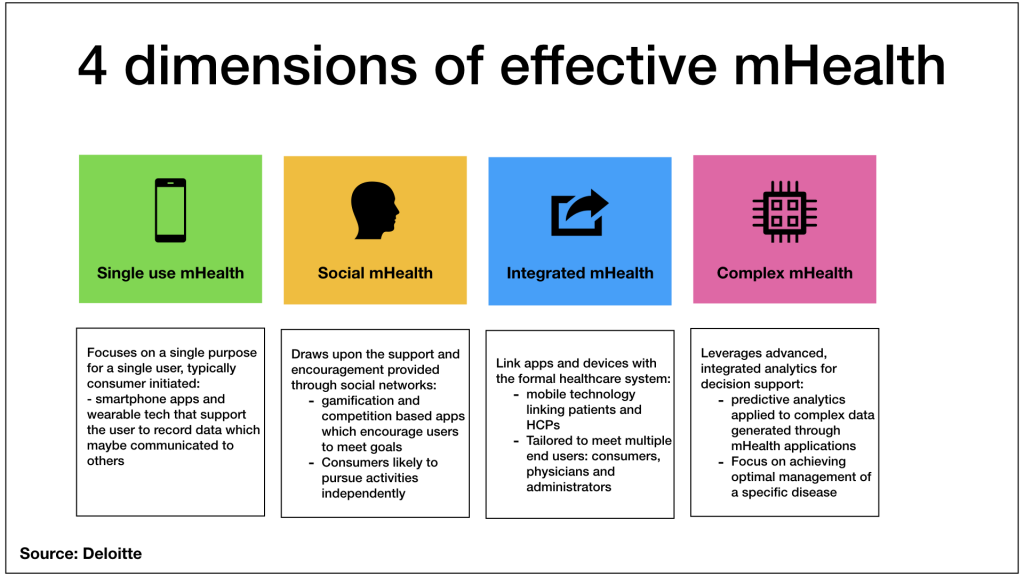
Image source
TEC is also helping healthcare providers with information and assistance they require through technologies like medical reference apps.
Athenahealth’s Epocrates is one such app
Epocrates is the point of care medical application by AthenaHealth. More than 1 million health care providers trust Epocrates in the moments of care. Epocrates was released on stage by Steve Jobs when the App store was released.
Epocrates can assist doctors and physicians in:
- Reviewing drug prescribing and safety information for thousands of brand, generic, and OTC drugs.
- Checking for potentially harmful drug-drug interactions among up to 30 drugs at a time.
- Identifying pills by imprint code and physical characteristics.
- Access timely medical news and research information.
- Find providers for consults and referrals in the Provider Directory.
- Select national and regional healthcare insurance formularies for drug coverage information.
- Perform dozens of calculations, such as BMI and GFR.
Technology is empowering patients
Technology is also helping patients in getting more information on ailments, symptoms, treatment procedures, etc. helping them to be informed, thus reducing anxiety and apprehension during the treatment cycles.
PatientTalk.com is one such web portal, which leverages the power of video to engage with patients. It is a health care website for patients diagnosed with life-altering medical conditions, both acute and chronic. This network-quality video site features actual patients and health care professionals sharing vital information about the practical, physical and emotional issues that patients face before, during and after initial diagnosis.
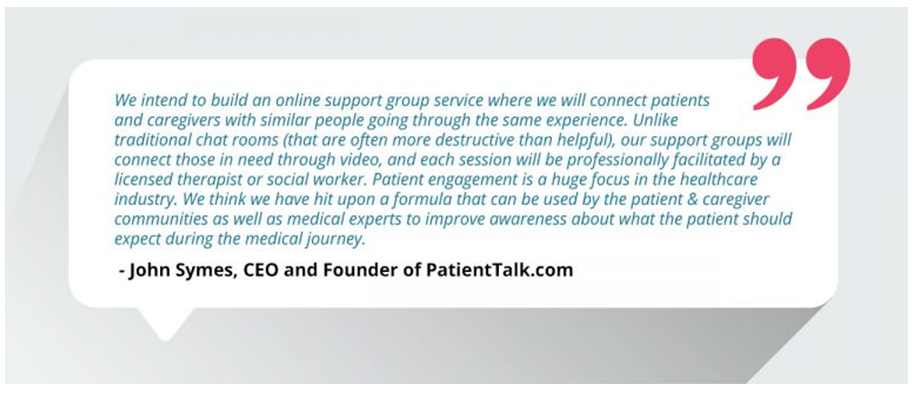
WebMD is another popular online portal for medical information and advice. According to ExpandedRamblings, WebMD received 75 million user visits a month in 2018. Of these, 49 million visits came in through mobile phones.
How Apple is front footing the digital revolution in healthcare
Apple’s new Health app is helping people prone to illnesses stay healthier. The Health app has the ability to incorporate data from thousands of other medical and health-related 3rd party apps, which could be for nutrition, medicine or fitness. The app syncs across devices – iPhone, Apple Watch, iPad, etc, and makes medical information immediately available. Features like heart rate monitoring, medication reminders, etc. help patients say on top of their illness.
Wearables in healthcare
Wearable tech is a part of the larger wave of technology called IoT, and it is growing at a fast pace. The Apple watch mentioned earlier is an example of wearable tech. According to research done by 3dinsider, over 178 million wearable devices were purchased in 2018. The projected number for 2019 is around 255 million units, which corresponds to a growth of 25.8%. The expected sales value of wearable devices at the end of 2019 is projected to be $42billion. The number of adults who used a wearable device in the US was 39.5 million in 2015 and had increased to 81.7 million in 2018.
Wearable tech has found usage in the healthcare segment beyond just monitoring and tracking the health and fitness data of the user. Wearables continue to evolve as virtual reality applications provide experience-based applications for clinicians and patients.
Wearables for Doctors
When the team at Google announced Google Glass in 2012, they said:
‘We think technology should work for you — to be there when you need it and get out of your way when you don’t.’
Five years down the line the device could not take off, but it opened doors for various industries to put it into use. In 2013, healthcare saw the first-ever application of Google Glass when Dr. Rafael Grossmann recorded a surgical process through Google Glass. In 2015, wearables took another step forward when the first surgery using Google Glass in combination with Olympus 3D imaging took place. Simultaneously, the Olympus Endosuite was fully controlled using the MYO gesture-controlled bracelet. The applications of wearables in healthcare have since gone beyond Google Glass where wearables are used in innovative ways. Here are a few instances:
AiQ Smart Clothing has developed a vital sign monitoring system built into a t-shirt that can monitor users’ heart rate, respiration rate, electrophysiological signals, etc. This t-shirt can be extremely useful during video appointments sessions with doctors, where doctors will not have to rely on the patient’s old reports and get real-time data on their vital stats instead.
Wearable tactile sensor A group of scientists from the National University Singapore has developed wearable liquid-based microfluidic tactile sensors. These sensors can be easily utilized for monitoring critical parameters in biomedical applications, particularly for those that may come in contact with the human skin or where human movement is highly versatile.
A team led by Conor Walsh, assistant professor of mechanical and biomedical engineering at Harvard and founder of the Harvard Biodesign Lab are developing wearable soft robots. The team has developed a soft exosuit that can assist with locomotion and perform small levels of assistance to a wearer and a glove that assists with grasping motions for those with hand impairment.
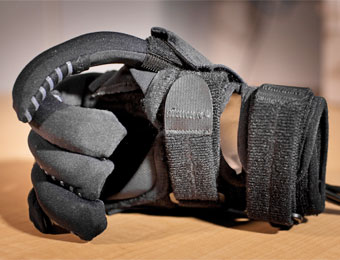
Image source
Multi-segment actuators used in the robotic glove enable an assistive range of motions. Image: Harvard’s Wyss Institute.
In the coming years, wearables will not just help in treatments but also in training medical professionals as well – An initiative called ‘Virtual Medics’ team at London Medical School’ aims to use wearables and other technologies to do just that.
Wearables for Patients
Wearable-tech can simplify a patients’ life beyond tracking and monitoring their health. Automation and push notifications can help patients get greater control of self-care, where the device can prompt them to check their weight, pulse, or oxygen levels, and enters results into mobile patient portals. Further, these results can be transmitted to the doctors in real-time. These details, when entered regularly, can predict the risk of ailments like heart diseases and keep a check on them.
Not only wearables help patients self-manage and monitor their health; they help doctors save costs.
E.g. the Zephyr Anywhere’s introduced a BioPatch which is a small device that is attached to a patient’s chest monitoring their vitals minute-by-minute and collecting medical-grade data for doctors’ use. The Biopatch alerts the nurses through smartphones, reducing their effort to physically check a patient every hour. This also helps them to react promptly should a patient need to be attended immediately.
Internet of Things (IoT) in healthcare
IoT is changing the way interactions happen across technologies and devices across industries. The increase in healthcare costs requires modern solutions, and IoT is seemingly the right solution for the benefit of both healthcare facilities and patients. IoT in healthcare manifests as IoMT (Internet of Medical Things) and is the interconnection of medical devices, infrastructure, software applications, health systems, and services. According to research by SmashingBoxes, there will be 40% IoT devices in use in the healthcare industry by 2020.

Image source
This growth in the influx of IoMT (Internet of Medical Things) is predicted to save the healthcare industry an estimated $300 billion. The revenue to healthcare facilities from IoT processes is estimated to be over $135 billion by 2025.
Here are some examples of how IoT is changing the healthcare landscape:
OpenAPS – closed-loop insulin delivery
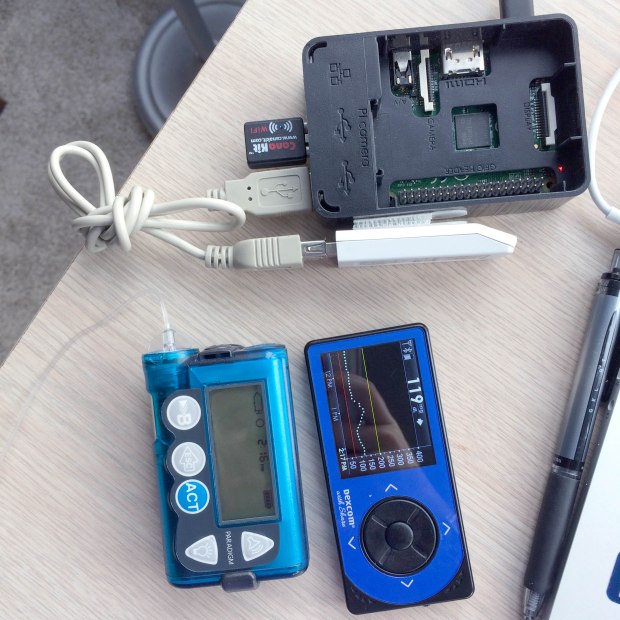
Image source
OpenAPS is an open and transparent effort to make safe and effective basic Artificial Pancreas System (APS) technology widely available to more quickly improve and save as many lives as possible and reduce the burden of Type 1 diabetes.
OpenAPS is a simplified Artificial Pancreas System (APS) designed to automatically adjust an insulin pump’s basal insulin delivery to keep blood glucose (BG) in a safe range overnight and between meals. It does this by communicating with an insulin pump to obtain details of all recent insulin dosing (basal and boluses), by communicating with a Continuous Glucose Monitor (CGM) to obtain current and recent BG estimates, and by issuing commands to the insulin pump to adjust temporary basal rates as needed.
Continuous Glucose Monitoring systems (CGM)
CGM is an implantable continuous glucose monitoring system, which uses a 90-day sensor underneath the patient’s skin, which measures the blood glucose level and sends it to the mobile app through a smart sensor.
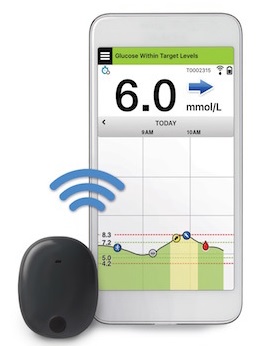
Connected inhalers
One of the major advantages of IoT and its subset technology wearables is that both can help and motivate patients especially the ones on a long-term ailment to adhere to their treatments. Propeller’s Breezhaler device is one such device that connects to its digital platform via a sensor, passively recording and transmitting usage data and sends reminders and notifications to the patients, and also insights into the triggers of their asthma attacks, so that they can prevent one.
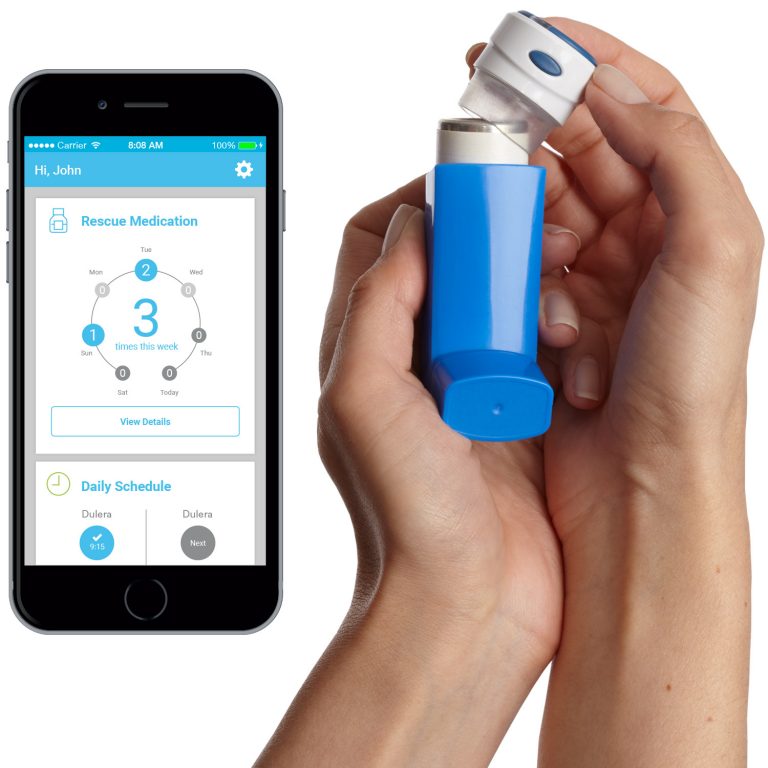
Image source
Ingestible sensors
Proteus Digital Health has invented ‘digital pills’ with ingestible sensors, dissolves in the stomach and produces a small signal which is picked up by a sensor worn on the body, which again relays the data to a smartphone app. Again, the purpose of this technology is helping patients with adherence to treatment.

Image source
Big Data & analytics in healthcare
Doctors and Physicians have long relied on their judgment while diagnosing an ailment and making treatment decisions. Big Data and Analytics have proved to be a boon for them, with the opportunity to provide evidence-based treatment to their patients. Big Data has opened up doors for doctors to systematically review clinical data and make treatment decisions.
Big data can aggregate individual data sets into algorithms and provides evidence-based on a large pool of data for the right treatment. According to Fingent, the global Big data infusion in the healthcare market is projected to reach $34.27 billion by 2022 with a CAGR of 22.07%. On a global level, big data analytics is expected to be worth over $68.03 billion by 2024.
Some health-care leaders are already leveraging big data and are using it in innovative ways to improve operational as well as diagnostic efficiencies. For e.g.
- Kaiser Permanente has fully implemented a new computer system, HealthConnect, to ensure data exchange across all medical facilities and promote the use of electronic health records. The integrated system had improved outcomes in cardiovascular disease and achieved an estimated $1 billion in savings from reduced office visits and lab tests.
- Blue Shield of California, in partnership with NantHealth, is improving health-care delivery and patient outcomes by developing an integrated technology system that will allow doctors, hospitals, and health plans to deliver evidence-based care that is more coordinated and personalized. This will help improve performance in a number of areas, including prevention and care coordination.
Real-time health systems
In this age of data deluge, it becomes critical for the healthcare sector to make sense of this data and drive real value through it. RTHS is helping healthcare providers to process and interpret data quickly, to make it easily consumable by the patients and also use this data for operational intelligence as well. Today’s consumers are used to accessing data in real-time via their mobile devices, and healthcare providers can leverage mobile apps, digital maps, etc. to create a positive patient experience.
Experiential wayfinding is one such way to simplify patients’ journeys and experiences inside hospital premises. Technology providers like Jibestream provide enterprises SDKs that give developers the tools to customize and integrate maps into apps.

Artificial Intelligence (AI) in healthcare
According to research by Frost & Sullivan, AI in the healthcare industry was valued at 663 million in 2014 and is projected to increase to 6.6 billion by 2021.
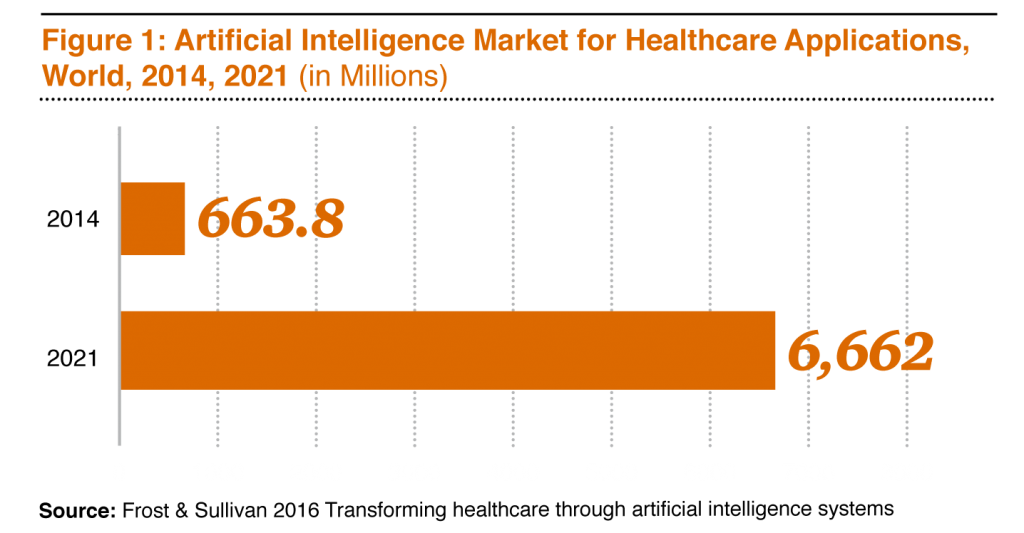
Image source
The healthcare industry is cognizant of the impact AI can have on improving the healthcare landscape. Technology is helping the healthcare fraternity in predicting diseases and giving a helping hand to doctors in preventing them.
Artificial intelligence already found several areas in healthcare to revolutionize starting from the design of treatment plans through assistance in repetitive jobs to medication management or drug creation. Here are some examples of how the healthcare industry has implemented AI:
AI-based health assistants
AI assistants are helping doctors in optimizing their time by covering a large part of clinical and outpatient services, freeing up doctors’ time to attend to more critical cases.
Your.MD is one such AI-powered mobile app that helps doctors with basic patient symptoms information. The chatbot asks users about their symptoms and provides easy-to-understand information about their medical conditions. The platform has a vast network of information that links symptoms to causes.
The assistant uses natural language processing and generation to provide a rich and fluid experience, and machine learning algorithms to create an intricate map of the user’s condition and provide a personalized experience.
Early and precise diagnosis
AI algorithms can quickly ingest millions of samples in short order and gather useful patterns. The medical fraternity is using this ability of AI to come-up with precise diagnosis early by picking up subtle symptoms as well.
Researchers at Stanford University have created an AI algorithm that can identify skin cancer. Similarly, DeepMind, a Google-owned AI company, is using machine learning to fight blindness in cooperation with NHS. Morpheo, another AI platform helps in the diagnosis of sleep disorders.
Improved patient care and treatment
Some diseases like cancer change the dynamics of the patient’s health at a fast pace. Keeping up with changes and adapting the treatment accordingly becomes critical in such cases. AI is helping in solving this problem.
IBM with its AI-based platform Watson is working on building effective treatment for cancer. It can ingest a massive amount of clinical trial data presenting cancer care teams with a list of effective therapies and treatment options.
AI is also helping patients in adhering to their treatment regimes. One example in this area is AiCure, a mobile app that uses AI and images analysis to control patient adherence to prescriptions.
Healthcare data is sensitive, and healthcare firms have to be very careful about the security of such data. Technologies like Blockchain are helping firms in maintaining the privacy of this huge amount of user data. Morpheo, for instance, uses blockchain to ensure transparency and privacy of patient data on its platform.
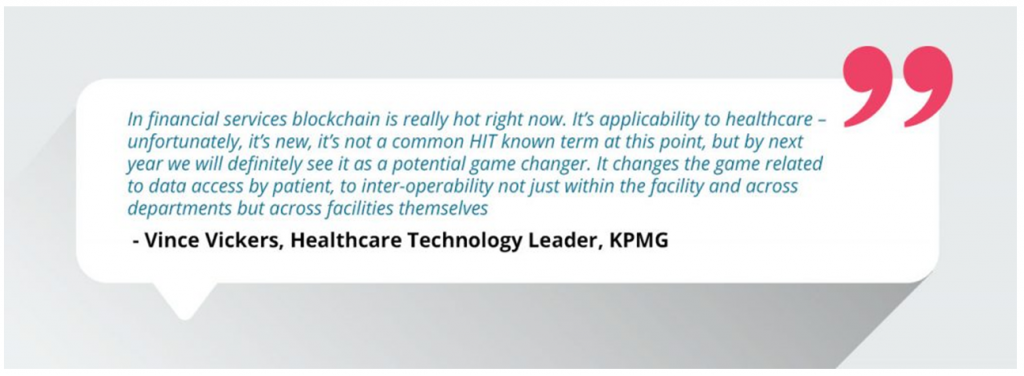
How healthcare enterprises can succeed with digital transformation
More and more healthcare companies worldwide now understand the importance of investing in digital technologies and including it as a part of their core strategy. According to a report by Statista, the global medical tech industry size is almost 430 billion U.S. dollars. Medical facilities are seeing an equal monetary benefit from tech advancements. The same report states that Johnson & Johnson earned nearly 27 billion U.S. dollars in 2017 through its Medtech services. There still are areas for improvement, as seen in the below McKinsey report:

Image source
Healthcare organizations looking forward to adapting digital transformation will have to look at it comprehensively, rather than in silos. Here are four core principles suggested by McKinsey which healthcare enterprises can follow to achieve success with their digital transformation efforts.
- Identify and prioritize their critical sources of value; they need to determine the products and services they provide that lead to competitive differentiation and benefit most from digitization.
- They must build their service-delivery capabilities—not just in physically integrating and managing new digital technologies but also in implementing new approaches to product development and distribution.
- Healthcare companies should look for ways to modernize their IT foundations, for example, upgrading pools of talent and expertise in the IT organization, moving to digital platforms such as cloud servers and software-as-a-service products.
- Strengthening their core digital transformation capabilities by developing internal experts with an expertise in digital technologies and approaches.
With technology on its side, healthcare is slowly transforming into a patient-centric industry. Digitization is benefiting both patients and caregivers alike. As technology advances, patients will be more informed and empowered to understand and deal with their ailments. For healthcare providers, digital transformation is opening global opportunities to create cost-effective and more efficient treatments.





